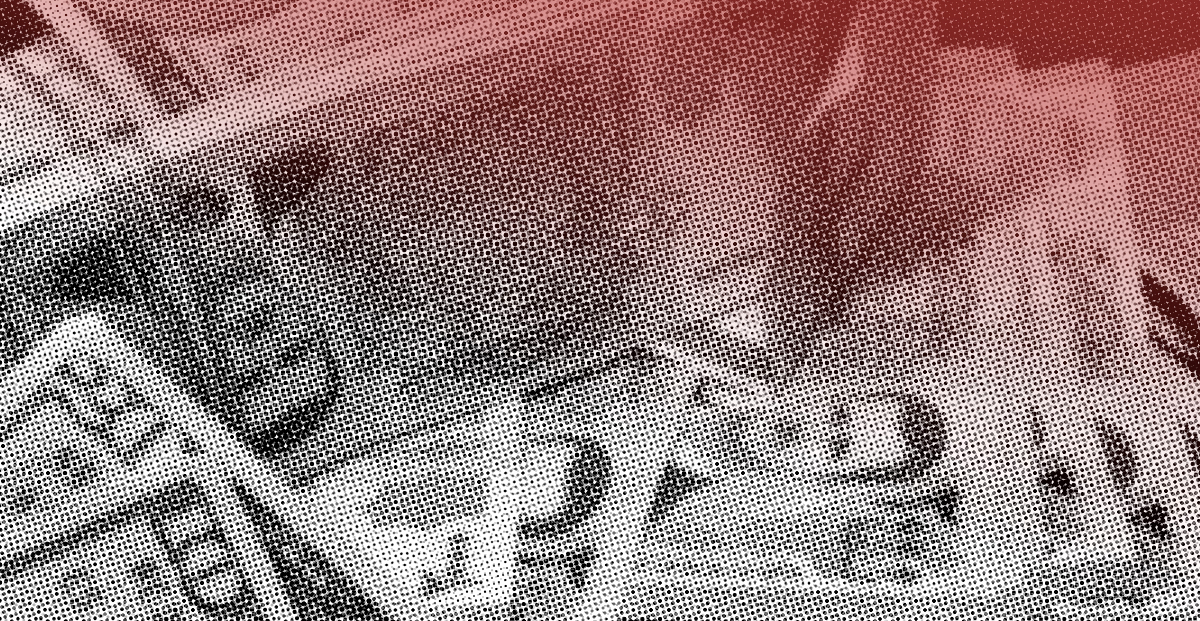The Syrian regime has taken various ad hoc measures in the past two months to control the value of the Syrian pound (SYP) against the US dollar, all of them in vain.
Changes of 5% or more in the exchange rate—up or down—have become near-daily occurrences, indicating the currency’s shaky position and the regime’s inability to contain its crisis. While the regime did manage to boost its value from 960 SYP/$ to 750 SYP/$ in the first week of December, this improvement was short-lived. By 16 December, the value had tumbled back down to 915 SYP/$, recovering only slightly the next day to 885 SYP/$, according to the “Syrian Pound Today” website.
This volatility in the exchange rate, which spikes up and down from one hour to the next (see charts below), illustrates the ineffectiveness of the regime’s policies (monetary or otherwise) to contain the pound’s crisis. The regime no longer possesses the foreign exchange that would enable it to regulate the market, nor is it able to procure it or control its movement within the country. Moreover, Damascus can no longer secure its usual support from the countries that have previously borne large financial burdens for it in recent years. Iran, the regime’s most trusted ally, is itself suffering from some of the most severe sanctions ever imposed on it in its history, as well as swelling popular anger at deteriorating living conditions and the collapse of its own currency. Recourse to Russia is similarly no longer feasible, as Moscow’s Syria policy now appears to be based on the notion that the time has come to make use of the Syrian regime, not do it further favors.

A salary increase, approved by Bashar al-Assad, of what amounted to 13,000 SYP (US$15 at the time of publication) after insurance and taxes was tantamount to an explicit declaration by the regime that the plummeting exchange rate will not be remedied, and that a rapid and far-reaching increase in the prices of goods is inevitable. This is a result of the central bank’s inability to finance imports, and its issuing of a new reduced list of commodities to be imported using foreign currency, as well as the fact that the real exchange rate in the market has reached double the official rate adopted by the central bank, fixed at 438 SYP/$ since November 2018. There is also no desire to change the reference price for exchange, despite the pound losing over 20% of its value in November alone, without the central bank rousing from its deep slumber.
The above further indicates a clearer trend by the regime towards withholding subsidies for most major consumable goods, and others such as agricultural, livestock, and industrial production inputs, the importing of which with foreign currency was previously covered through the central bank, due to the enormous balance of payments deficit. It’s possible this support will be cancelled entirely in the coming phases, thus “officially” leaving traders to secure the foreign currency they require for imports through the black market—which is in fact what’s already happening today—even while certain crucial goods such as rice, sugar, and oil are included within the “smart card”An arrangement introduced in early 2019 allowing cardholders to obtain limited quantities of fuel at subsidized prices. system, as fuel is.
In light of the failure of monetary measures to remedy the pound’s crisis, the regime has resorted in recent days to new methods to obscure the problem and its true causes. These have included imposing customs cordons around Syrian cities and between their neighborhoods, on the pretext of stopping smuggling and pursuing traders who manipulate exchange rates, to give the impression that the latter are fabricating the crisis. The regime has also shut down a number of currency exchange shops and gone after their owners, as well as returning once again to the policy of seizing funds from certain influential persons close to Assad to contain the anger on the street; the most recent case being Tarif al-Akhras, an uncle of Assad’s wife Asma. Notably, on this occasion, the seizure of funds came through the General Directorate of Customs, in keeping with the regime’s narrative that smugglers and crisis profiteers have taken advantage of “the state’s preoccuption with its war on terrorism” and it is they who have aggravated the pound crisis. This narrative of economic saboteurs is self-contradictory. On the one hand, the regime denies the existence of a crisis at all, insisting that the economy is strong and the pound stable, while on the other hand it accuses a litany of influential people, entities, and states of causing the crisis that does not exist.
The attempts by the regime’s cabinet to support the pound, whether through the businessmen support initiative or the “good word” campaign launched by the central bank, have failed. In parallel, the regime now seeks to secure foreign exchange by offering government bonds in both pounds and dollars at high interest rates. The aim of these bonds is to secure large quantities of cash in both local and foreign currency so as to improve the balance of payments, provide for basic living needs, and boost the value of the pound. At the same time, the step aims to bring down the surplus of local currency and reduce the extent to which it is being exchanged for dollars on the black market. Realistically, this process can only succeed by forcing businessmen to buy treasury bonds against their will, given the regime’s lack of cash solvency and the absence of confidence in the central bank among those whom the regime imagines will buy the bonds.

The subject of Syria’s economic crisis went almost entirely unmentioned in Bashar al-Assad’s numerous televised interviews with foreign media outlets over the last few weeks. It was brought up, however, in his appearance on Syrian state TV, in which he said that foreign sanctions and the economic blockade were the two main culprits responsible for the crisis’ emergence and exacerbation. He further asserted that his forces’ success in reclaiming control over large swathes of territory previously held by the opposition had deprived the regime of the foreign exchange that previously flowed into those areas in the form of funding for projects run by international NGOs and the UN, which reflected negatively on the exchange rate. While it’s true that the regime benefited from the influx of dollars to opposition-controlled areas, Assad exaggerates their value and real impact on the economy, speaking as though they amounted to billions. This is in line with the standard regime propaganda adopted from the beginning about massive financial support from international actors to rebellious areas. Had there been truth to these claims, one might have expected the flows of cash to alleviate the suffering of people living in those areas, whose poverty rates were in fact equivalent to, or indeed in excess of, those in regime-controlled areas.
Today, in the context of the interconnection between opposition- and Islamist-controlled areas and those held by the regime—in terms of the inevitable flow of cash across the frontlines around the country—a proposal has resurfaced to adopt the Turkish lira in areas controlled by the jihadist Hay’at Tahrir al-Sham group as well as those governed by Turkish-backed factions in northern Syria. The idea would be to mitigate the effects of inflation and the decline in living standards due to the Syrian pound’s depreciation. The proposal was previously tabled during the depreciation crisis of 2015. Its implementation failed then, as it would certainly fail today, due to the absence of the necessary financial tools, and because it is hardly in Turkey’s interest to leak significant quantities of its local currency outside its borders where they cannot easily be controlled.
The Lebanese connection
The depreciation of Syria’s pound cannot be fully segregated from that of its Lebanese counterpart, and the procedures followed by the Lebanese Central Bank to limit the exit of foreign exchange from Lebanese banks, and indeed the attempts by Lebanese entities to bring dollars in from Syria, in a reversal of the previous norm whereby Syrian traders and the Assad regime obtained much of their dollar requirements from the Lebanese markets. In consequence, the Syrian regime has now not only lost Lebanon as a country from which it can smuggle foreign currency, but there has also been a counter-leakage of dollars from Syria into Lebanon. Moreover, the limits placed by Lebanese banks on withdrawals of foreign currency following the depreciation of the lira have greatly affected the ability of Syrian businessmen—many of whom operate as frontmen for the Assad regime—to withdraw their deposits in dollars to finance imports or to pump them back into the Syrian local market.
The Syrian pound’s depreciation exacerbates the crisis in living conditions suffered by all Syrians, irrespective of the parties controlling their territory. The first and most quickly-felt effects were the contraction of markets and their loss of a large number of commodities, in addition to the rising inflation rates. Though these effects came rapidly as a result of the depreciation, they will not be undone at the same speed in the event that the pound recovers its value, even in part, unless there is at least relative long-term stability.
By themselves, financial and monetary crises cannot bring down brutal regimes such as Assad’s, as may be seen in the many examples of financially-collapsed autocracies, from Iran to North Korea to Saddam Hussein’s Iraq under sanctions. Such states develop their production tools and adapt their economies to become more flexible in the face of currency collapse, economic sanctions, and an inability to secure foreign exchange to finance imports. They do this by creating local alternatives or mechanisms that enable them to circumvent sanctions and exchange certain goods for local produce, which the Assad regime is unable to do. The Syrian economy is shattered; production is devastated; and the country’s natural resources are being looted by Russia, Iran, and the United States, while the regime remains preoccupied with its war on Idlib Province and the pulverization of the people living therein.
[Editor’s note: This article was originally published in Arabic on 12 December, 2019. Where possible, the charts and other data cited above have been updated to reflect the latest figures available at the time of publication.]







